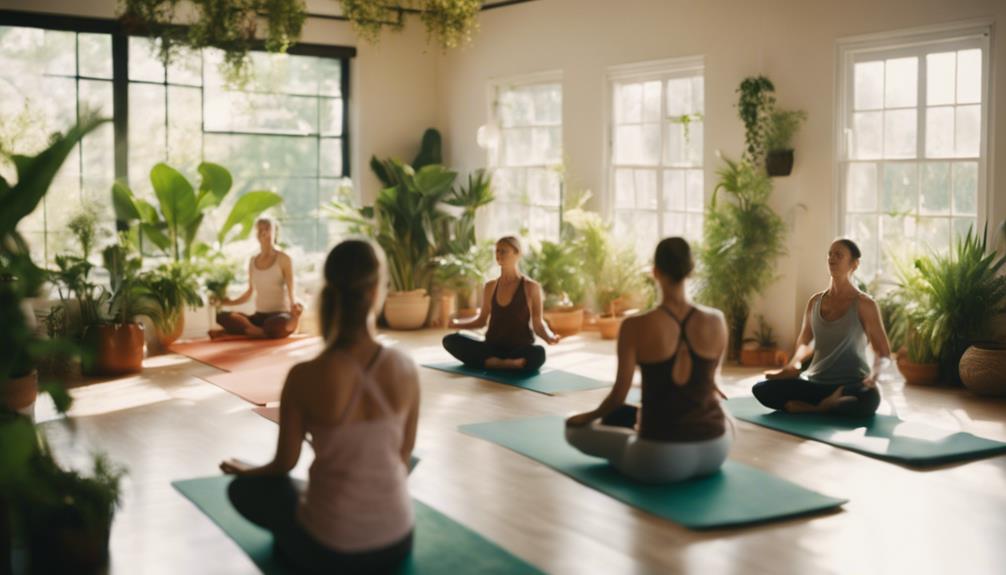Yoga Flow

Yoga is not just a physical exercise; it is a holistic approach to wellness that incorporates the mind, body, and spirit. One of the most popular and beneficial styles of yoga is the “Yoga Flow.” This dynamic practice combines various postures seamlessly, creating a harmonious flow that enhances flexibility, strength, and mental clarity. In this comprehensive guide, we will explore the essence of yoga flow, its benefits, techniques, and how to incorporate it into your daily routine.
What is Yoga Flow?
Yoga flow, often referred to as Vinyasa, is a style of yoga characterized by a fluid sequence of poses that are interconnected. The primary focus of yoga flow is on the synchronization of breath and movement, allowing practitioners to transition smoothly from one pose to another. This style of yoga promotes a meditative state, helping to cultivate mindfulness and awareness. Unlike more static forms of yoga, such as Hatha, yoga flow encourages dynamic movement, making it suitable for all skill levels.
The Benefits of Practicing Yoga Flow
Incorporating yoga flow into your routine can yield numerous physical and mental benefits. Firstly, it enhances flexibility by encouraging the body to move through a full range of motion. As you progress through various poses, your muscles elongate and strengthen, reducing the risk of injury. Secondly, yoga flow improves cardiovascular health by elevating your heart rate during the practice. This aerobic component can help in weight management and overall fitness.
Moreover, yoga flow is an excellent stress-relief tool. The rhythmic nature of the practice and the focus on breath work can lead to reduced anxiety and improved emotional well-being. Practicing yoga flow regularly can also enhance concentration and mental clarity, allowing you to tackle daily challenges with a clearer mind.
Related Posts:
Essential Components of a Yoga Flow Practice
Understanding the essential components of a yoga flow practice can help you maximize your experience. The primary elements include breath, movement, and intention. Breath is the foundation of yoga flow; it serves as a guide for your movements. Practitioners are encouraged to inhale during upward movements and exhale during downward transitions.
Movement in yoga flow is dynamic, with poses flowing into one another. Common sequences include Sun Salutations, which serve as a warm-up and help to build energy. Intention-setting is also crucial; before starting your practice, take a moment to reflect on your goals and what you wish to achieve during your session.
How to Get Started with Yoga Flow
Getting started with yoga flow requires minimal equipment. A yoga mat, comfortable clothing, and an open mind is all you need. Beginners should consider joining a class or following online tutorials to learn proper techniques and sequences. Start with basic poses such as Downward Dog, Warrior I, and Child’s Pose to build a solid foundation.
It’s essential to listen to your body and progress at your own pace. If you feel discomfort or strain, don’t hesitate to modify poses or take breaks. As you become more familiar with yoga flow, you can experiment with different sequences and styles. Remember that consistency is key; aim to practice several times a week for optimal results.
Yoga Flow Sequences for Every Level
Yoga flow is versatile and can be tailored to suit various skill levels. For beginners, a simple sequence might include poses like Cat-Cow, Downward Dog, and Forward Fold. These foundational poses help build strength and flexibility while allowing novices to get comfortable with the flow.
Intermediate practitioners may incorporate more challenging poses such as Plank, Chaturanga, and Warrior II into their sequences. Advanced yoga flow can include intricate transitions and advanced balancing poses, such as Handstands and Arm Balances. Regardless of your skill level, remember that the goal of yoga flow is to find your rhythm and enjoy the journey.
Common Mistakes to Avoid in Yoga Flow
While practicing yoga flow, it’s vital to be aware of common mistakes that can hinder your progress or lead to injury. One prevalent mistake is rushing through poses. Yoga flow is about maintaining a steady rhythm, so take your time to transition between poses and focus on your breath.
Another mistake is neglecting proper alignment. Poor alignment can lead to strain and injury, so always ensure that your body is correctly positioned during each pose. Finally, remember not to push yourself too hard. Yoga is not a competition; listen to your body and honor its limits.
Enhancing Your Yoga Flow Practice
To take your yoga flow practice to the next level, consider incorporating additional elements such as meditation, breath work, or props. Meditation before or after your practice can enhance your mindfulness and deepen your connection with yourself. Breath work, or pranayama, can help regulate your energy and focus your mind.
Props like blocks or straps can assist in achieving better alignment and support during challenging poses. Additionally, creating a calming environment with soft lighting, pleasant scents, and soothing music can enhance your overall experience and help you fully immerse yourself in your practice.
Conclusion: Embrace the Journey of Yoga Flow
Yoga flow is more than just a physical activity; it is a transformative journey that connects the mind, body, and spirit. By understanding its principles, benefits, and techniques, you can create a fulfilling practice that enhances your overall well-being. Whether you are a beginner or an experienced yogi, yoga flow offers endless possibilities for growth and exploration.
So roll out your mat, take a deep breath, and let the flow guide you on your path to wellness. With each practice, you will discover new strengths, both physically and mentally, and cultivate a deeper connection to yourself and the world around you. Embrace the flow, and let it transform your life!How Many Yoga PosesYoga For Weight Loss At Home For FemaleYoga Sleep